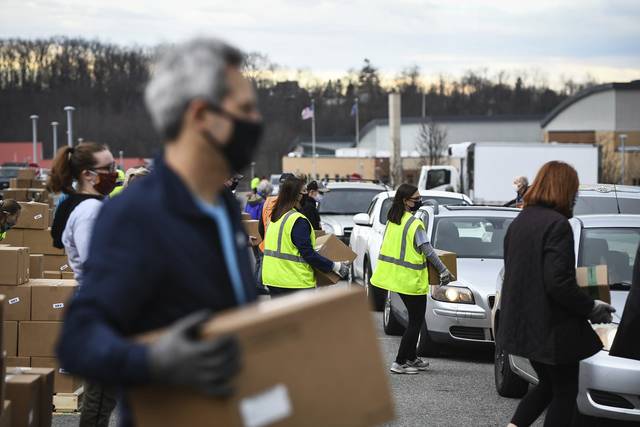Greater Pittsburgh Food Bank celebrates 40 years of feeding the hungry
Since its inception, the Greater Pittsburgh Community Food Bank has evolved beyond emergency food assistance and providing non-perishable food items to distributing more than 12 million pounds of fresh produce in 2020.
This month marks the 40th year of operation for the Food Bank, which opened its doors in Pittsburgh’s Hill District as the once-thriving steel industry began its decline. By 1983, as the region’s unemployment rate hit 18%, many were in need of food assistance.
Today, the need for the services of the food bank, now headquartered in Duquesne, is as great or greater. Hunger is at an all-time high due to the covid-19 pandemic, according to the food bank which cites a 42% increase in food insecurity in Southwestern Pennsylvania including a 57% increase in childhood hunger.
As a result, In fiscal year 2020, the Food Bank network distributed enough food for nearly 40 million meals.
“What we’ve been able to accomplish over the past eight months, let alone the past 40 years, is a true reflection of our community as a whole,” said Food Bank president Lisa Scales. “Without the support of our donors and volunteers we wouldn’t be able to fulfill our mission for as long as we have.”
Since March, the Food Bank has distributed more than 30 million pounds of food in response to the covid-19 pandemic through drive-up distributions, home delivery and its pantry network. The organization says its long-range goal is for fresh produce to account for half of all food distributed by 2025.
The Food Bank also launched the Grow Share Thrive campaign in September to extend its network of partners to include organizations that can reach individuals who do not go to a traditional food pantry.
“Grow Share Thrive is our vision and commitment to ending hunger and its root causes across our region,” said Scales. “By expanding our infrastructure and programming, all our neighbors have food today, tomorrow and for a lifetime. We are building the Food Bank for the future.”
That future vision includes addressing the root causes of hunger and inequality, Scales said.
“We are committed to doing more and it starts with us transforming the current food bank system to better meet the immediate needs of our neighbors,” she said.
Remove the ads from your TribLIVE reading experience but still support the journalists who create the content with TribLIVE Ad-Free.

